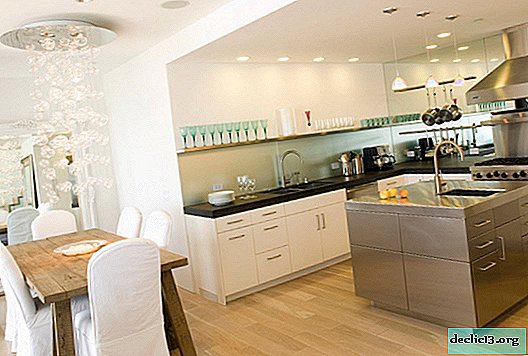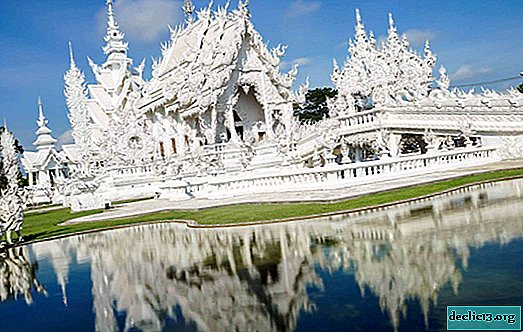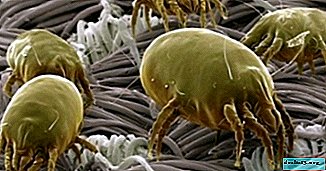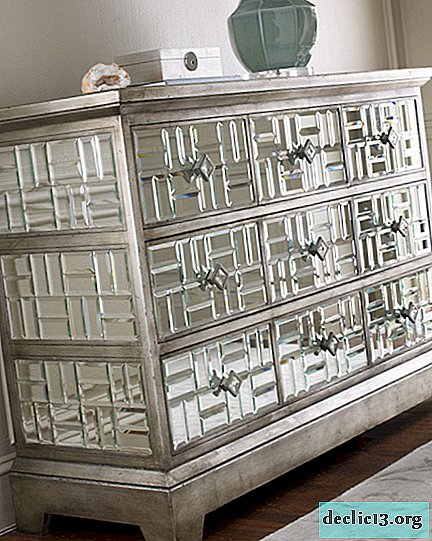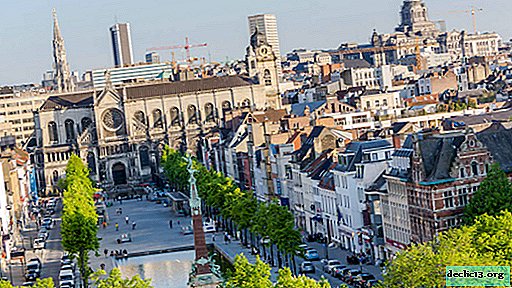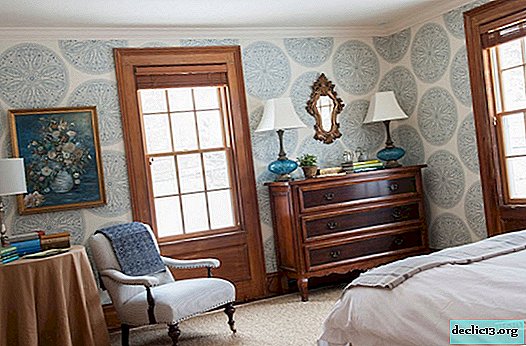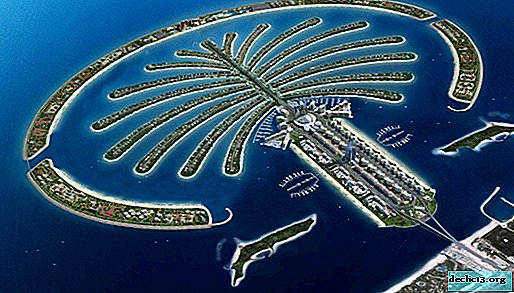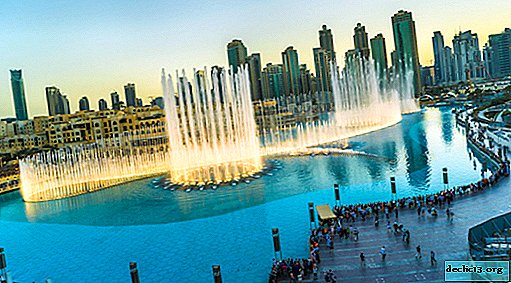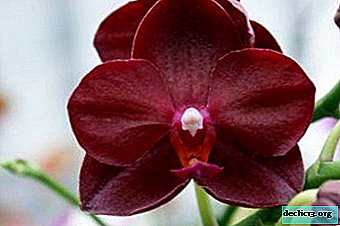Sanssouci - a "carefree" park and palace in Potsdam
The most beautiful place in Germany is rightfully recognized as the Sanssouci palace and park ensemble (Potsdam, Brandenburg Land). Since 1990, this unique attraction of Germany is included in the list of objects protected by UNESCO.

The entire area of the Sanssouci complex is 300 hectares. This is a territory with hills and lowlands, in which once there were swamps. There is a lot of interesting things in the park, and walking there is a pleasure. "Sans souci" from French is translated as "without worries", and just such sensations appear during a walk. And the most significant building of the Sanssouci ensemble in Potsdam is the palace of the same name, which once served as the residence of the kings of Prussia.
The history of the ensemble of Sanssouci
The process of creating Sanssouci in Germany can be divided into 2 main stages:
- Works begun by Frederick II the Great in 1745, and lasting a couple of decades.
- Reconstruction of old and construction of new facilities under the direction of Frederick William IV in 1840-1860.

In 1743, on a business trip, the king noticed a spacious, very picturesque hilly area near Potsdam. Frederick II liked it so much that he decided to equip a summer residence there.
First, on a gentle hill laid terraces with vineyards, which became a kind of core of the whole complex. Later, in 1745, on the grape hill began to build the castle of Sanssouci - a "modest viticulture house", as Frederick II spoke of it. This palace was built as a private summer house, where the king could read his favorite books and consider works of art, philosophize and play music, settle alongside his beloved dogs and horses.
Old Fritz, as the king was called by the people, himself created most of the sketches of the future castle. Then the architects developed projects on them and sent for approval to the king.
The viticulture house was inaugurated in 1747, although by that time not all of its halls were ready.
When the terraces with vineyards and the castle were completely finished, they began arranging the surroundings: flower beds, lawns, flower beds and orchards.

Under Frederick II, the Art Gallery, the New Palace, the Tea House and much more appeared in the Sanssouci Park.
Old Fritz died in 1786, and only in 1991 his remains were reburied in the grave, in the park of Potsdam.
Until 1840, the viticulture house almost always remained empty and gradually fell into decay. But when Frederick William IV ascended the throne, literally idolizing the entire Sanssouci park in Potsdam, he and his wife settled in the castle.
The side wings were in need of repair, and the new king undertook a major renovation. There was an idea to recreate the original appearance of the castle, but the old drawings were not preserved. Restoration work was carried out very talentedly, the new was combined with the old harmoniously and with a high sense of style.

The construction, which began with the advent of Frederick William IV on the throne, lasted until 1860. During this time, new lands were attached to the Sanssouci park, the castle Charlottenhof was built and a park was built around it.
Until 1873, the widow of Frederick William IV lived in Sanssouci, after which he belonged to the Hohenzollern for some period.
In 1927, the museum began to operate in the palace, and visitors and visitors had access to it and the park. Sanssouci became the first palace museum in Germany.
Sanssouci Palace
Sanssouci Castle in Potsdam is located on a grape hill, on the east side of the park of the same name. Although now the castle is recognized as the central object of the entire ensemble, it was built as an addition to the famous vineyards.
 Marble Hall
Marble HallThe Summer Palace is a long one-story building in which there is no basement. Thanks to this decision, it is convenient to exit the palace directly into the garden. In the center of the building is an oval pavilion, and above it is a small dome with an inscription on the vault of Sans Souci. On the facade, directed to the vineyards, there are many huge glass doors through which sunlight penetrates the building. Between the doors there are sculptures that look like Atlanteans - this is Bacchus and his retinue. There are only 36 sculptures, almost all of them are made of marble and warm sandstone.
The main premise of Sanssouci Castle is the Marble Hall, located in the central pavilion, under a domed roof. From above, in the ceiling, a window is cut that looks like an “eye” in the Roman Pantheon, and powerful columns support the inner cornice. The Marble Hall has beautiful statues that symbolize the diverse fields of science and art.
 Marble Hall
Marble HallA very rich and beautiful design has a library, the walls of which are decorated with carved wooden panels with gilding. The concert hall is also gracefully decorated: there are a lot of paintings and sculptures that create a harmoniously and stylishly sustained composition.
The Sanssouci Palace (Germany) and now regularly hosts exhibitions of paintings.
What else to see in Sanssouci Park
Sanssouci Park in Potsdam (Germany) is a unique place, one of the most attractive and picturesque in the country. There are a lot of ponds, flowering vegetation, there is also a whole system of fountains, the largest of which releases a stream 38 meters high. These are the most significant buildings in the order in which they are located along the route from the main entrance to the park.
- Friedenskirche ensemble and the Marley Garden. Under the altar of the Friedenskirche temple, a tomb is equipped, where many representatives of the royal dynasty rest. The Marley Garden existed even before the advent of Sanssouci, and in 1845 it was completely cultivated.
- Grotto of Neptune. This decorative structure is located at the foot of a grape hill. The grotto is decorated with a pretty waterfall with several cascades, as well as sculptures of the king of the seas and molluscs.
- Art Gallery. The building stands to the right of Sa Susi Castle. This is the first museum in Germany that contains only paintings. An exhibition of paintings is there now, mainly works by Italian Renaissance artists, as well as Flemish and Dutch Baroque artists. Since the building has very good acoustics, concerts are often organized in it.
- Grape terrace. A 132-degree staircase connects Sanssouci Castle to the park through grape terraces. In this zone of the park there are many fountains, statues, plantings. To the right of the terraces is the grave of Frederick the Great - it can be recognized by the plate on which the potatoes always lie. This is the memory of the inhabitants of Germany that it was this king who taught them to grow and eat potatoes.
- House with dragons. Initially, it housed the home of winegrowers. The architectural design of the house became a reflection of the "Chinese" fashion of that time. In the nineteenth century, the house was converted, now it has a restaurant.
- Castle New Chambers. This one-story castle was built specifically for royal guests.
- Orangery Palace. The palace was built at the behest of Frederick William IV as a guest house for Tsar Nicholas I and his wife Charlotte. The Raphael Hall is very interesting, which housed 47 excellent copies of the works of this master.
- Gazebo. On the north side, Sanssouci Park is bounded by the Klausberg Upland, on which the Belvedere stands. This is a two-story building with terraces and a viewing platform, from where almost the entire picturesque park is perfectly visible.
- Antique Temple and Temple of Friendship. Two twin rotundas are located east of the New Palace, symmetrically with respect to the central alley. The Temple of Friendship is made in the Greek style, its dome is supported by 8 columns. It serves as a symbol of fidelity between loving people. The ancient temple is a small copy of the Roman pantheon. Until 1830, it served as a museum of coins and gems, and later a tomb of the Hohenzollern family was arranged there.
- The new palace. The three-story New Palace, decorated with many sculptures, was erected by Frederick the Great to demonstrate the power, strength and wealth of Prussia. The king used this palace only for work. Opposite are the Triumphal Gate with a colonnade.
- Park and palace Charlottenhof. On the lands acquired in 1826 south of the Sans Souci Park, Friedrich Wilhelm IV decided to equip the park in the English style. For 3 years, the castle of the same name was built in Charlottenhof Park, featuring strict elegant architecture and decoration.
- Roman baths. Not far from the castle Charlottenhof, near the lake, there is a whole group of beautiful buildings, in the interior of which a picturesque garden is hidden.
- Tea House This "Chinese house in Potsdam is considered one of the most beautiful not only in Germany but also in Europe. The house has the shape of a clover leaf: 3 interior rooms, and between them there are open verandas. The Tea House houses collections of Chinese and Japanese porcelain.
 Grotto of Neptune
Grotto of Neptune Dragon House
Dragon House Antique temple
Antique temple Tea house
Tea housePractical information
You can find the Sanssouci Park and Palace at this address: Zur Historischen Mühle 14469 Potsdam, Brandenburg, Germany.
ScheduleYou can visit the park throughout the week, from 8:00 until sunset.

Sanssouci Palace is open all days of the week, except Mondays, at such times:
- April-October from 10:00 to 18:00;
- November-March from 10:00 to 17:00.
As for the other buildings of the complex, some of them are available for visits only in the summer season (April or May - October). Visits may also be restricted for some other reason. Detailed information can always be found on the official website www.spsg.de/en/palaces-gardens/object/sanssouci-park/.
Cost of visitingEntrance to the territory of the famous German park is absolutely free, and you must pay for visiting palaces, art galleries, exhibitions. Prices are different (you can find out on the official website), it is most profitable to buy a combined ticket "Sanssouci +".

"Sanssouci +" gives the right to inspect all open castles in the park of Potsdam (including Sanssouci Castle) on the same day. The price of a full combined ticket is 19 €, preferential - 14 €. The ticket indicates the time to enter each specific object, if it is missed, it will not work later.
Tickets are sold on the official website, at the box office or visitor center (next to the Sanssouci Palace and the New Palace). Immediately you can buy a ticket for 3 €, which gives the right to take photos of the interiors in the castles of Sanssouci Park in Potsdam.
At the box office and tourist centers you can get a free map of this German park in Russian.
Useful tips from experienced travelers
- Independent travelers should take into account that at the height of the tourist season, on Tuesdays, the palaces of Sanssouci and Novy do not allow free visitors. This day of the week is fully scheduled for group excursions that come on tourist buses.
- Entering the territory of Sans Souci (Potsdam) is equally convenient from any direction, since a central alley (2.5 km) is laid along its entire territory, and small alleys diverge from it. You can go to the park from the east and visit the Sanssouci Palace, and then go along the well-groomed paths to the New Palace. You can first visit the Ruinenberg hill to admire the entire park, and then go for a walk along it.
- To get acquainted with the famous Sanssouci ensemble in Germany, it is advisable to set aside at least 2 days: in 1 day it’s hard to see and save everything. One day you can devote a walk in the park, and on the second visit the castles and see their interior.
- In order to fully appreciate the beauty of Germany’s most famous park, it’s best to visit it during the warm season, when plants bloom. But on too hot days, when the temperature rises to + 27 ° C and higher, it is not easy to walk there: the air cannot move freely due to the many trees and bushes, there are no drafts, it is too hot.

Walk through the park and the Sanssouci Palace in Potsdam.

